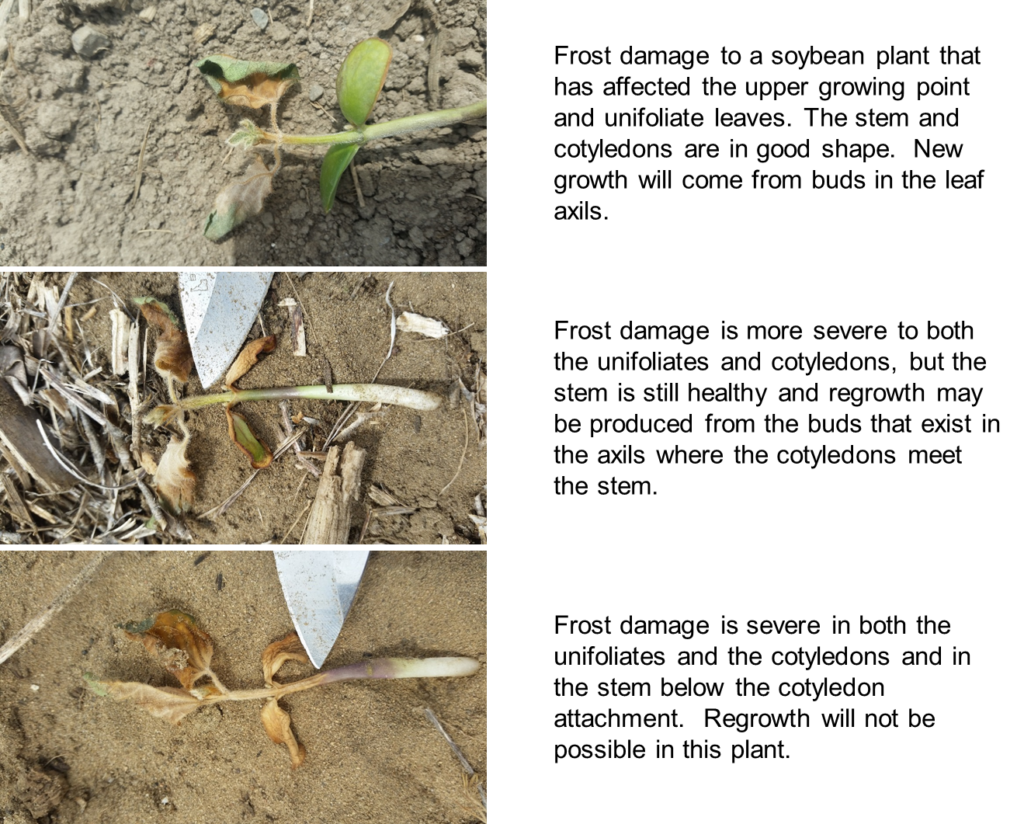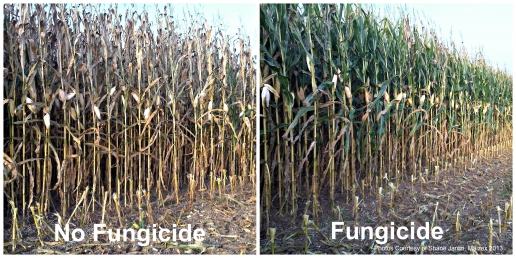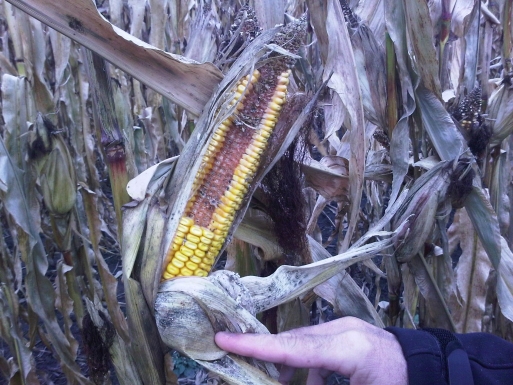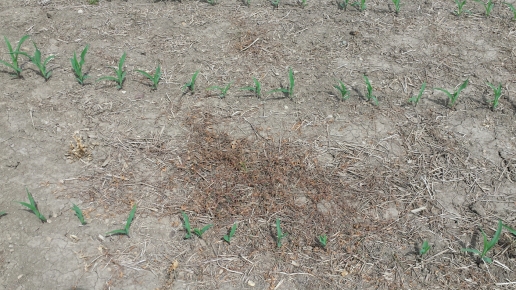Manganese (Mn) is one of nine essential micronutrients for plant growth. Corn is only a moderate consumer of manganese and so deficiency in most mineral soils is rare. High organic matter (muck) soils can be more frequently diagnosed with some level of Mn deficiency. In mineral soils under dry conditions and where the soil is…
Tag: Silage Corn
Assessing Frost Damaged Corn and Soybeans – May 26, 2015

Key Considerations for Corn (See pictures to the right) Key Considerations for Soybeans (See pictures to the right) For further information, contact your Maizex representative. Greg Stewart, Maizex Agronomy Lead…
Importance of Corn Flowering Date Diversity
Corn pollination can easily be considered one of the most important periods of crop development. For a corn farmer, this time period of crop development and reproduction is what ultimately makes the grain. Any negative impact to a corn plant at this time can have significant consequences to overall grain production. Unlike other grain crops,…
Bushels in the Field – How to Estimate Corn Yield

Yield estimates are only as accurate as the field area they represent. Repeat counts at multiple locations to increase your accuracy. Factors such as water availability, insects, diseases and weeds can also affect seed fill and final yields. As the corn plants mature and get closer to black layer, these stressors have less of an…
Milk Line – What does it all mean?
Harvest maturity (occurring around 25% grain moisture) usually refers to the point at which harvest and mechanical loss are at a minimum. Before this happens, corn develops a black layer which is located at the base of the kernel opposite to the embryo. Typically this occurs approximately 55-65 days after silking. Another way to estimate…
Be Aware … Don’t let NCLB end your season early!

As corn began to tassel in the beginning of August, many fields contained Northern Corn Leaf Blight (NCLB) lesions. As of today, most fields are showing minimal signs of progression; however, heavy dews, high humidity and moderate temperatures are ideal for disease progression. In worst cases, the entire leaf will become blighted. Early infections with…
Damage to Corn from Birds

Many parts of Ontario experience significant damage to corn due to birds. Often, birds will feed on developing corn ears immediately following pollination and during the early stages of grain fill. Birds are very attracted to the developing soft kernels as a food source. Large flocks of birds can cause an incredible amount of damage…
Why a Corn Fungicide?
The 2014 growing season started late for most and has not been a particularly warm season. On a year where the marketing of a corn crop has taken a turn south, protecting the bushels you have or potentially trying to create extra bushels is very important. Why Would I Spray at Tasseling Time? (Silking to…
Corn – Important Growth Stage Milestones
Understanding what goes on within a corn plant is important to your final yield. In order to track your corn’s growth progress, we use a standard Developmental Stage Key. The Vegetative Stage of corn is noted by the letter V. As each leaf unfurls from the whorl, a collar is formed. These collars are numbered…
The Sins of Strip Till

I have heard and spoken about many positives around strip till, but wanted to share a big negative that I saw in spots this spring. One of the goals of strip till is to create a seed bed in a zone while leaving the majority of the soil untouched. A late, wet fall last year…
